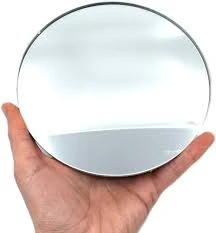

Tempered glass, also known as toughened glass, is a type of safety glass that is manufactured through a process of extreme heating and rapid cooling. This process makes it significantly stronger than regular glass, enabling it to withstand greater impacts and thermal stresses. As urban architecture evolves and safety standards rise, tempered glass has become increasingly popular in a variety of applications, from commercial buildings to residential homes.
One of the standout features of tempered glass is its increased strength. It is approximately five to six times stronger than standard float glass of the same thickness. This exceptional toughness is primarily attributed to the tempering process, which involves heating the glass to temperatures exceeding 600 degrees Celsius and then quickly cooling it. This method not only increases the glass’s resistance to breakage but also alters how it reacts when broken; unlike regular glass, which shatters into sharp shards that can cause injury, tempered glass breaks into small, blunt pieces, significantly reducing the risk of injury.
The applications of tempered glass are vast and varied. It is commonly used in the construction of glass doors, windows, and facades, where both safety and aesthetics are essential. In buildings, it allows for expansive views and natural light while offering durability and security. Additionally, tempered glass is ideal for use in areas prone to high temperatures and fluctuations, such as shower doors, glass partitions, and even glass tabletops—making it a versatile choice for both residential and commercial settings.

Beyond its physical properties, tempered glass is also favored for its aesthetic appeal. Its clarity and ability to be manufactured in various thicknesses and sizes make it a popular choice for architects and designers looking to create striking visual effects. The sleek look of tempered glass enhances modern interior designs and harmonizes beautifully with other materials like steel and wood.
Moreover, tempered glass is often treated with coatings that improve its resistance to scratches and enhance performance in terms of insulation. Low-emissivity (Low-E) coatings can be applied to improve energy efficiency by reflecting heat, thereby maintaining comfortable indoor temperatures and reducing energy costs. This characteristic is particularly valuable in today’s environmentally conscious market, where sustainable building practices are becoming a priority.
In conclusion, tempered glass represents a significant advancement in glass technology, combining safety, strength, and style. Its application across various fields showcases its versatility, making it an integral component in modern architecture and design. As developments continue in glass manufacturing techniques, the potential for tempered glass applications will only expand, solidifying its role in the future of construction and design. Whether used in commercial or residential projects, tempered glass not only enhances aesthetic appeal but also ensures safety and durability, making it a preferred choice for builders and homeowners alike.